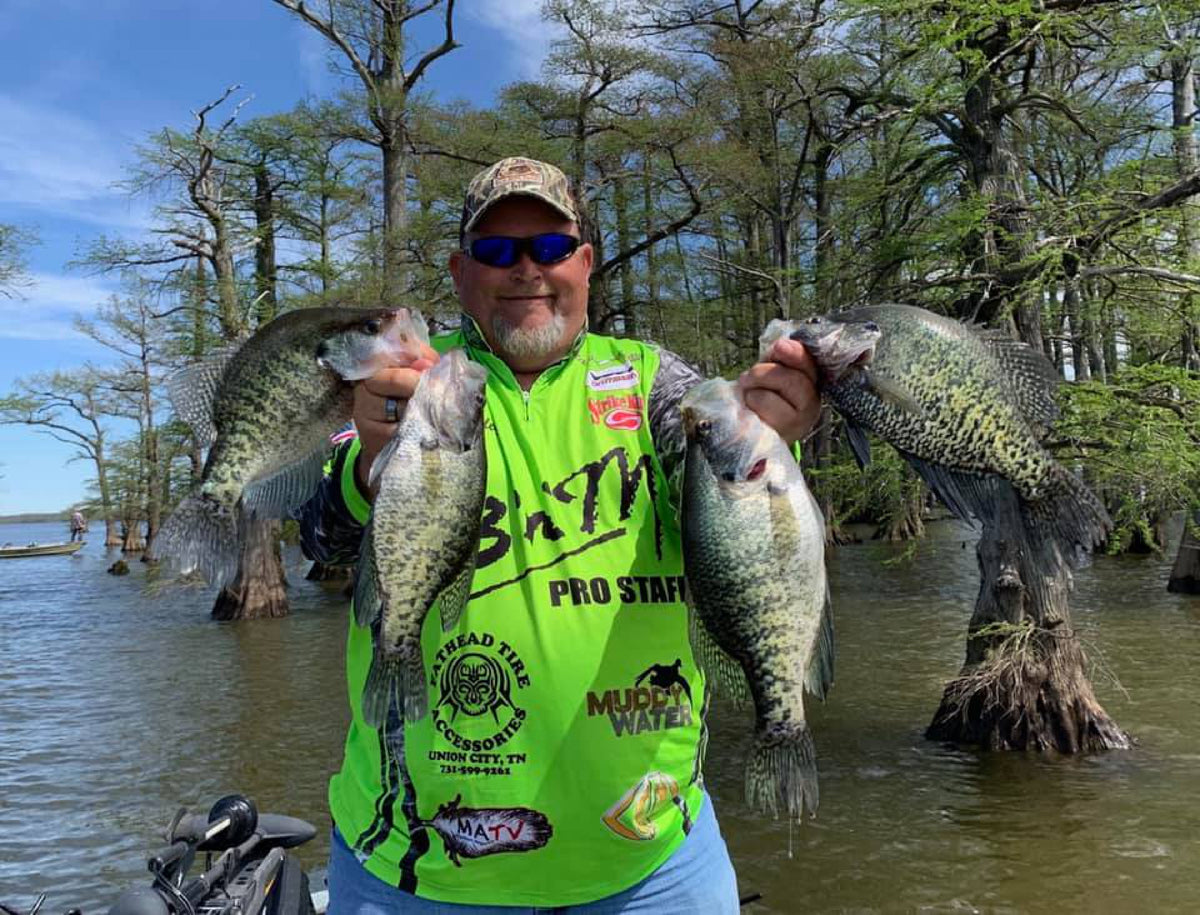
Long Line Trolling with Torch Tindle
Long Line Trolling with Torch Tindle
By Phillip Gentry
This time of year, even casual crappie anglers are looking forward to getting on the water to catch crappie during the Spring spawn. B’n’M brand ambassador Torch Tindle views the spawn a little differently than most. In fact, Tindle has been known to say he hates fishing during the spawn and can’t wait for it to end. One of the biggest reasons for this statement is because he is a die-hard long line trolling fan.
“Long lining works great during the pre-spawn if you can find fish suspended headed from deep water up to the shallows,” said Tindle. “It’s after the spawn, when crappie turn and go the other way, that I get excited.”
Because it’s hard to pull jigs in clearer, shallow water to catch spawning fish, Tindle said long lining is not the ideal way to target crappie on the big Mississippi Four Reservoirs and now, his new home lake at Ross Barnett, when fish are spawning.

By Making his own jigs, Tindle has tailored his jigheads specifically for big Mississippi crappie.
Ideally, he likes to see crappie in water that is at least 10 feet deep and fish suspending anywhere from 3 feet deep down to over 14 feet deep. At that point, he’ll throw out 8 rods behind his War Eagle guide boat (four rods each so long as he has another angler fishing with him) and start trolling.
His favorite rods for the job are B’n’M Pro Staff Trolling Rods, PST’s for short. He places a 16-foot rod towards the front of the boat in a rod holder followed by another 12-foot rod, both perpendicular to the boat. Near the transom, he’ll place two more 12-foot PSTs, two on each side, to spread out his lines.
“One thing I learned awhile back is to spool each reel with a different color line,” he said. “I use orange, and fluorescent yellow, fluorescent green, and fluorescent blue on each side. That way if the lines get tangled, and eventually they will, you can easily sort out which line goes to what rod and get your baits back in the water quicker.”

Using different colored lines helps cut untangle time in half and lets Tindle get back to fishing.
Using two jigs per line, Tindle has developed sort of a homemade guide for how deep each baited line will go. Using 6-pound test mono, he has calculated that two 1/32 oz jigs will get him down 3 – 5 feet. Double 1/16 oz heads will get him from 6 – 9 feet deep, two 1/8 oz will get him 10 – 12 feet deep and late in the summer or during the dead of winter when crappie are at their deepest, he’ll tie on double ¼ oz heads for 14 feet and below.
Tindle said he makes his own jig heads, attaching large big leaf under spin blades on each one. He admits this causes the jig to ride a little higher when trolled than store-bought jigs.
“Dialing in the precise depth is mostly about trolling speed,” he said. “I start at 1 mph but might bump up as much as 1.7 mph to get the baits higher and faster. I’m continually experimenting with speed to find out what the crappie want.”
In the modern world where most every crappie angler is using forward facing real-time sonar, Tindle has not been left behind. He loves his forward-facing sonar unit and uses it to precisely mark the depth of the fish he’s seeing out in front of the boat.

Long line trolling is not an exact science, which is why Tindle says makes it so much fun to fish.
“I think we’re all surprised at how shallow crappie will get, especially earlier n the year,” said Tindle. “The new sonar, set to read out to 80 feet tells me exactly how deep I need to be and lets me adjust my speed. By the time the jig gets there, I can bring it up or down right where the fish are.”
Another depth trick he uses is to constantly sweep the boat in a wide arc, making the outside jigs rise and the inside jigs fall. If the fish hit on the inside, he might slow down a couple tenths and speed up a couple tenths if the bites are on the outside.
Another, but certainly not the only, remaining piece to the long lining puzzle is jig color. Tindle utilizes a variety of large rubber body baits impaled on his 2/0 jig hooks. He said each lake has it’s own hometown favorite color, but with 16 hooks in the water, he’ll mix and match colors, usually staying on the brighter end of the color spectrum in muddy water and on the natural end in clear water, until he finds what the fish want.
“There’s no exact formula to long line trolling, which is probably why I love this type of fishing so much,” he said. “You’re constantly changing baits, boat speed, turning radius, and looking for fish. It’s just an amazingly fun way to fish.”
************************
To book a guided crappie fishing trip just about anywhere in the state of Mississippi with Torch Tindle, contact him by phone at (662) 515-0175.
***********************
Wherever fishing takes you, B’n’M has been there. Visit our website at bnmpoles.com
Also in Weekly Tips and Techniques

Winter Crappie Fishing Strategies with Lance Hughey
B’n’M pro-staffer Lance Hughey said it never gets too cold to catch crappie.

North Texas Fall Crappie Fishing with Brian Carter
Texas crappie pro-staffer Brian Carter loves to pitch jigs at standing timber during the fall of the year.

Summer Crappie Fishing with Billy Blakley
B’n’M pro-staffer Billy Blakley claims the copious amount of rainfall so far this year has created some great summer crappie fishing on Reelfoot Lake.
